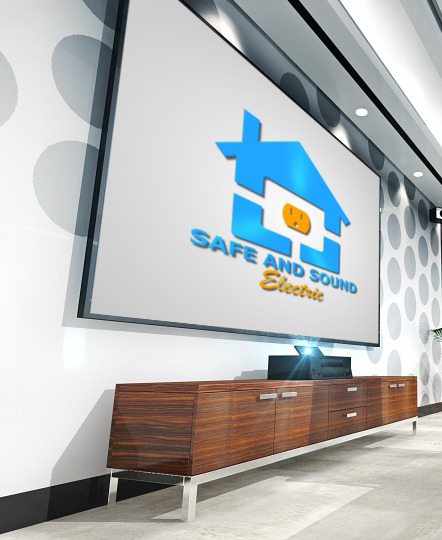What type of mount bracket do you want?
The first big decision is what type of mount bracket you want. A tilting mount will hold your TV flat against the wall, but also allow for downward tilting, which is great if you’re going to mount your TV high up on the wall or over a fireplace. An articulating mount means your TV will be on a retractable arm that allows you to pull it away from the wall and swivel it, which is great if your room has a few viewing locations.
What’s going to be connected to the TV?
Next, you’re going to need to figure out what needs to be connected to the television. A cable box? Roku? Blu-ray player? Gaming console? It’s important to give this information to Safe and Sound Electric ahead of time so they know how many video or HDMI cables to bring and can also discuss storage options with you.
Where are the components going to live?
Having a plan for where all of those components are going to live is key. Are they going to live in a console below the television? On floating shelves? Alternatively, there are now options to mount devices behind the TV using wireless boxes (and yes, your remote control will still work). The important thing is just to know where it’s all going to live since that directly impacts the installation process. You’ll also want to make sure you have everything that needs to be hooked up in the house on installation day, so that you can get right to watching as soon as the job is finished.
Where do you want your TV on the wall?
Safe and Sound Electric will help you out with this one, but your comfort while watching TV is something you should really take into consideration. Do you like sitting in the front row at the movies? Probably not, which means you’re also not going to want to be staring up at your TV all of the time. (A tilting mount will help with this if somewhere like above the fireplace is your only option.)
What kind of walls do you have?
There’s not much you can do about this, but whether or not you have dry wall, stone, or brick, will impact how and where the TV is hung, especially if you want to conceal the cords which leads us to…
Do you want to conceal all of the wires?
Fire code dictates that high voltage power cords (a.k.a. the plug for your TV) can’t go behind walls, which means your installer may need to add an electrical outlet on the wall where you’re mounting the TV if there’s not one already. This will cost extra, so it’s something you’ll want to keep in mind. Low voltage wires like HDMI cables and video cables can all go behind the wall, if you purchase the right kind; more on that below. (You will be responsible for touching up the paint afterward though.)
What to Expect from a TV Install
Safe and Sound Electric will mount your TV with your own bracket and HDMI cables. We recommend CL3 HDMI cables as they will be much quicker to install since they do not require conduit to be fished within the wall. These cables are HDMI 2.0b which is the latest spec until HDMI 2.1 comes out. With the length of the cables figure Vertical + Horizontal space + 6 ft you want to have as short of cables without being too short, so round up. If you want an outlet to be installed behind the TV it is important to include a picture of your electrical panel with its door open that way we can make sure to bring out the correct components. Some people want to have multiple HDMI cables run to the TV, this is fine as long as the cables you buy are adhering to the aforementioned specifications. If there is no access to the wall and the run is required to go horizontal, there will be some sheetrock damage. Safe and Sound Electric can help you with sheetrock damage by keeping it to a minimum and by providing you with a contact of a drywall contractor they recommend. A typical TV mounting, and in the wall, fished, concealed wiring job, and additional outlet can be done in under 4 hours and will require a permit and subsequent inspection from a government inspection department that will need to be fielded by the homeowner.
